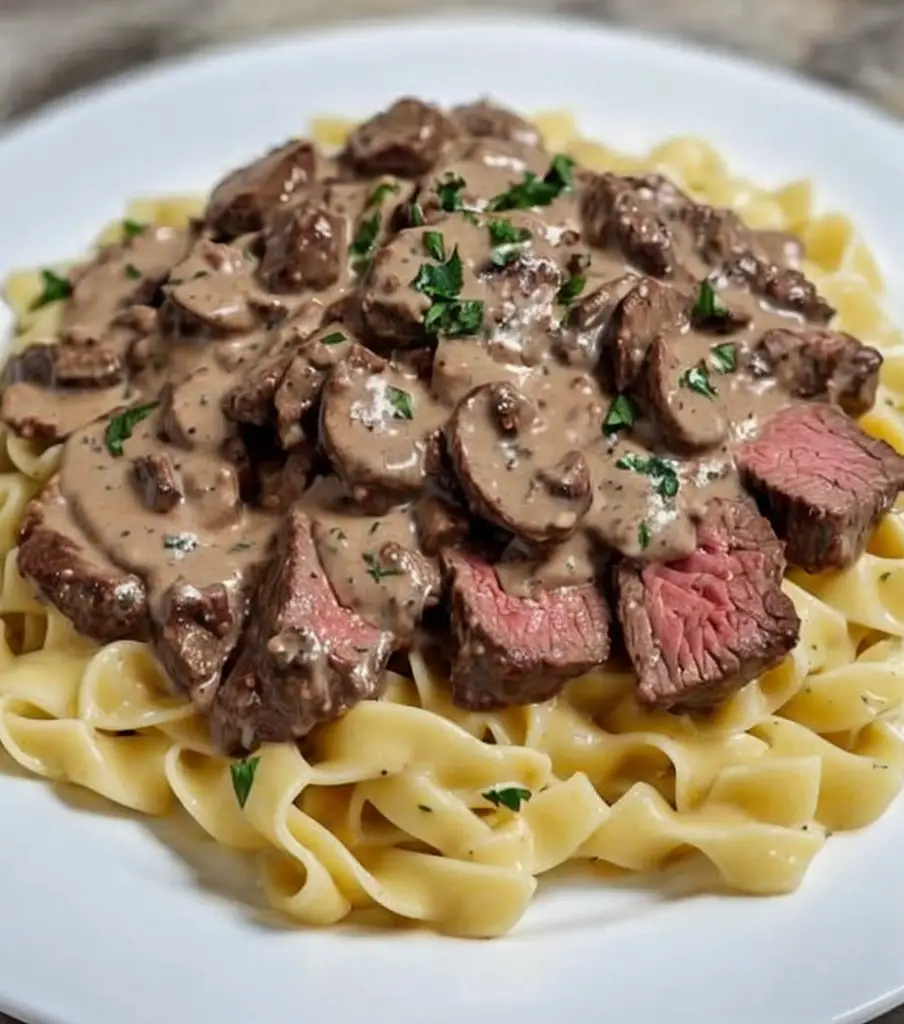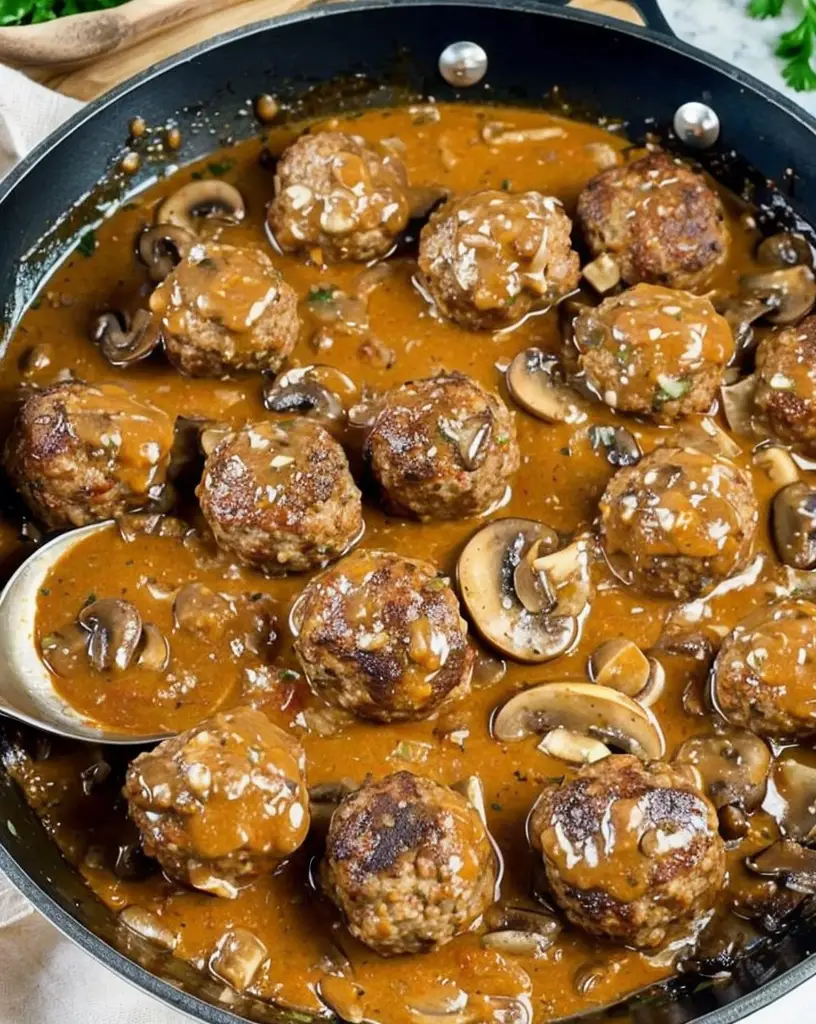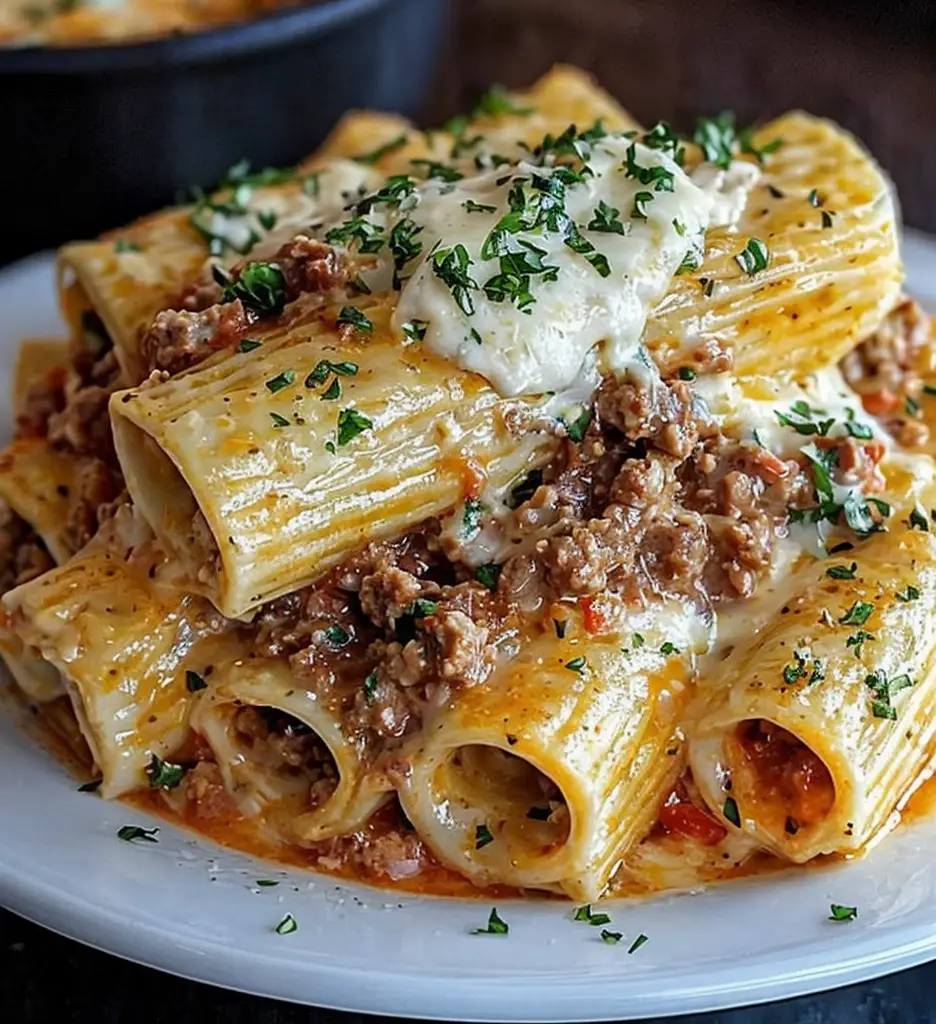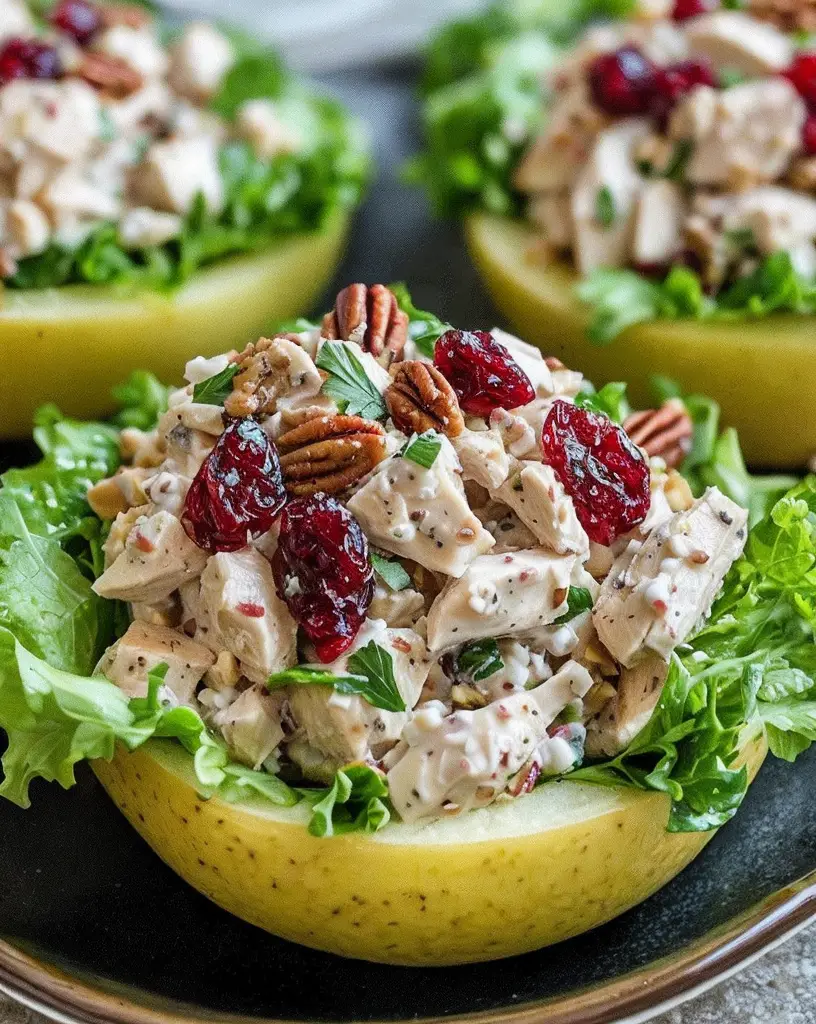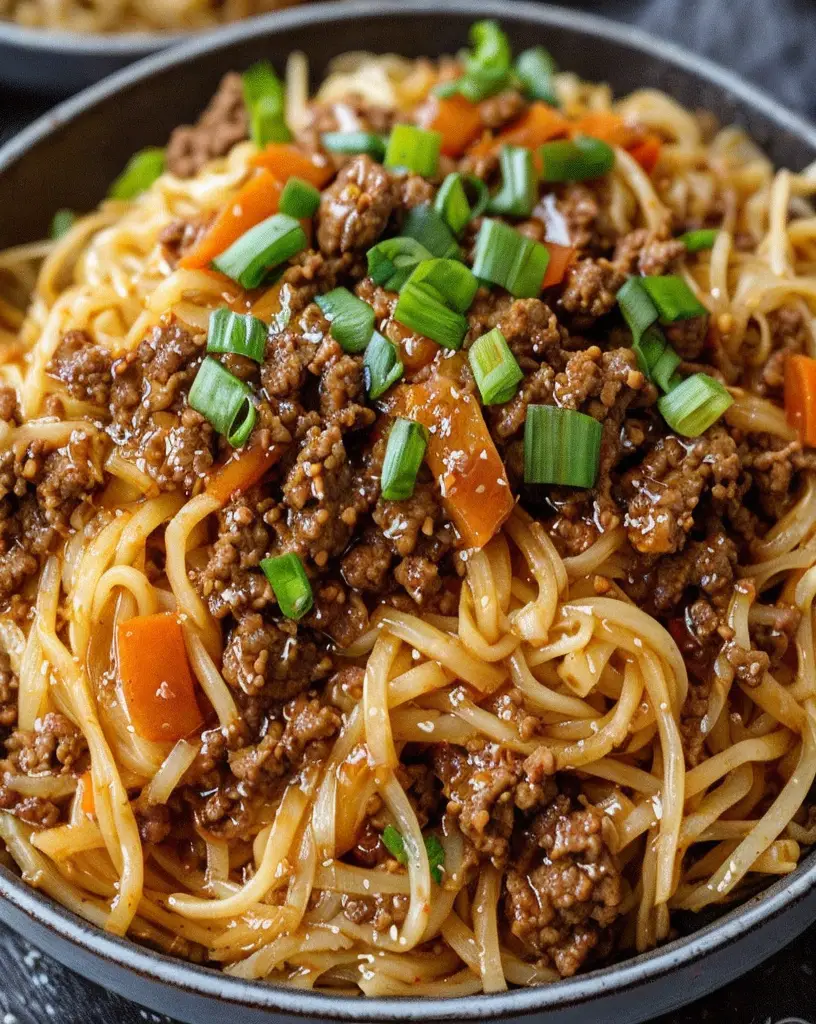Delicious Beef Stroganoff with Egg Noodles: A Comforting Classic
Beef Stroganoff with Egg Noodles is a classic dish that evokes feelings of warmth and comfort. This rich and creamy recipe features tender strips of beef simmered in a luscious sauce alongside perfectly cooked egg noodles, making it an ideal choice for family dinners or cozy gatherings. The harmony of flavors in this dish is enhanced by the earthiness of mushrooms and the aromatic notes of onions, all tied together with a drizzle of sour cream that brings a delightful tanginess. The result is a meal that not only satisfies the palate but also warms the heart.
Imagine plopping down after a long day, greeted by the inviting aroma of beef stroganoff wafting through your kitchen. The tender beef soaks up the delicious sauce while the egg noodles serve as the perfect vehicle for each bite. This comfort food staple is not just about fullness; it’s about pleasure and nostalgia. Whether you’re new to cooking or a seasoned chef, this recipe will guide you through creating a mouthwatering dish that’s guaranteed to impress.
Quick Recipe Highlights
- Flavor Profile: Earthy, creamy, and slightly tangy, the balance of flavors in this dish provides a deliciously satisfying experience.
- Texture: The combination of tender beef and soft egg noodles creates a pleasing contrast in every bite, enriched by the creamy sauce.
- Aroma: The savory scent of sautéed onions and garlic combined with the rich scent of beef creates an enticing aroma that fills your kitchen.
- Visual Appeal: Creamy sauce-coated noodles dotted with tender beef and mushrooms make for an inviting and comforting presentation.
- Skill Level Needed: This recipe is moderately difficult, making it perfect for those eager to expand their culinary skills without feeling overwhelmed.
- Special Equipment: A large skillet and a pot for boiling noodles are essential, along with basic cooking utensils.
Recipe Overview
- Difficulty Level: This beef stroganoff is considered a moderate recipe, requiring some chopping and sautéing skills, but it is manageable for most home cooks.
- Category: This dish falls under the category of main course meals, suitable for lunch or dinner, especially during colder months.
- Cuisine: Originating from Russia, beef stroganoff has become a popular meal in many countries, each adding their own twist to the traditional recipe.
- Cost: The ingredients for this recipe are generally affordable, making it a cost-effective option for family meals.
- Season: Beef Stroganoff is a fantastic dish for all seasons, particularly fall and winter when hearty meals are most comforting.
- Occasion: Whether it’s a weeknight dinner or a special family gathering, this dish fits perfectly into a variety of dining scenarios.
Why You’ll Love This Recipe
The taste and texture appeal of Beef Stroganoff with Egg Noodles cannot be understated. The combination of tender beef, creamy sauce, and soft noodles creates a satisfying experience that resonates with both young and old. Every bite brings forward a fusion of flavors that performs a delightful dance on your palate, making it hard to resist seconds.
Convenience is another key benefit. This recipe can be prepared in under an hour, making it an excellent option for busy weeknights. The simplicity of the ingredients and the straightforward cooking steps allow even novice cooks to whip up a gourmet meal with ease, providing an enriching experience in the kitchen.
Nutritional advantages come into play with this dish, balancing protein from the beef with the carbohydrates in the egg noodles, providing sustenance and energy. You can also include additional vegetables such as spinach or bell peppers to boost the nutritional value.
This recipe shines when it comes to social and entertaining value. It’s a crowd-pleaser that’s perfect for gatherings. A hearty beef stroganoff dish tends to pique interest and spark conversations around the table, creating a warm and inviting atmosphere.
Cost-effectiveness and accessibility are significant perks as well. Most of the ingredients for Beef Stroganoff are budget-friendly, and they’re typically staples found in many households. This makes preparing a delicious meal both economical and accessible for everyone.
Historical Background and Cultural Significance
The origin of Beef Stroganoff can be traced back to 19th-century Russia, named after the Stroganov family, who were wealthy landowners. Initially, the dish contained just beef and mustard, as culinary traditions evolved, it developed into the creamy version we know today, enriched with the influence of French cuisine.
Culturally, Beef Stroganoff holds a significant place in Russian gastronomy, symbolizing the blending of cuisines and culinary techniques. Over time, this dish has transformed into an international staple, reflecting the cultural exchanges that occur via food.
The evolution of this recipe has seen various iterations, from the original simplified version to the creamy, mushroom-laden dish popular today. Each adaptation tells a story about the taste preferences and ingredients available throughout different eras and regions.
In terms of regional variations, cultures around the world have embraced this dish, leading to delightful interpretations such as using chicken or pork, or even going vegetarian. These variations showcase regional flavors and local ingredients, ensuring that Beef Stroganoff can be found on dinner tables globally.
Ingredient Deep Dive
Beef: This key ingredient is the star of the dish, providing a hearty and satisfying base. Choose quality cuts such as sirloin or tenderloin for the best texture and flavor. Nutritionally, beef is rich in protein and essential nutrients, including iron and B vitamins. It’s important to store beef correctly to maintain freshness; always refrigerate or freeze it promptly after purchase. For those seeking alternatives, chicken or turkey can be used, though the flavor will differ.
Egg Noodles: A classic component, egg noodles offer a delightful texture that complements the creamy sauce. These noodles are typically made with eggs, allowing them to hold onto sauces well. In terms of nutrition, egg noodles provide carbohydrates for energy. When selecting, look for fresh noodles for a tender bite or choose whole grain options for added fiber. Store any leftover noodles in an airtight container in the fridge, and they can be enjoyed later in salads or soups.
Common Mistakes to Avoid
- Not searing the beef properly, which can result in tougher meat. Always heat the pan well before adding the beef to lock in the flavors.
- Overcooking the noodles, leading to a mushy texture. Cook them until just al dente, as they will continue to cook in the sauce.
- Skipping the resting time for the beef after cooking, diminishing tenderness. Allowing the beef to rest helps in retaining moisture.
- Adding the sour cream too early, causing it to curdle. Add it at the end of the cooking process for the best results.
- Using low-quality beef, which can negatively impact flavor and texture. Always opt for good cuts of meat.
- Failing to season adequately throughout the cooking process. Seasoning at each step enhances overall flavor.
- Overloading the dish with too many ingredients, leading to a lack of balance in flavors. Stick to the core ingredients for the best outcome.
- Not letting the sauce simmer enough for flavors to develop. Take the time to let the mixture meld for a richer taste.
Essential Techniques
Searing the Beef: This technique is crucial for developing deep, rich flavors. Begin by bringing a skillet to a high heat, ensuring the pan is hot enough to achieve a good sear. This process caramelizes the meat’s surface, intensifying flavor. Avoid overcrowding the pan as it can lead to steaming instead of searing, which can dull the flavors.
Deglazing the Pan: After sautéing the beef and vegetables, deglazing is important to capture the flavorful bits stuck to the pan. Pour a splash of broth or wine into the hot skillet, scraping with a wooden spoon to lift those flavors into your sauce. This technique adds depth and complexity to the final dish.
Pro Tips for Perfect Beef Stroganoff
1. Choose tender beef cuts like sirloin or tenderloin for a juicy texture. The quality of the beef will greatly affect the overall taste of your stroganoff.
2. Don’t rush the cooking process. Allow ample time for each ingredient to develop its flavor before adding the next. This will ensure a rich and savory sauce.
3. Use good stock for a flavorful sauce. Homemade or high-quality store-bought stock can deeply enhance the taste profile of your stroganoff.
4. For added depth, consider a splash of Worcestershire sauce or Dijon mustard to the sauce.
5. Experiment with different mushrooms, such as shiitake or cremini, for an earthy flavor boost.
6. Consider fresh herbs like thyme or parsley for a bright finish just before serving.
7. Make the sauce in advance and store it separately until ready to serve to allow flavors to meld.
8. Always adjust seasoning to your preference. A touch of salt and pepper can elevate the dish.
Variations and Adaptations
Regional variations of Beef Stroganoff can introduce exciting twists on the classic dish. For instance, in Hungary, Paprika is often added for a kick of heat, while in Sweden, it’s common to see this dish served with pickles for an added crunch.
Seasonal adaptations can include adding fresh vegetables during the spring and summer months. Incorporating asparagus, peas, or bell peppers can create a lighter version, allowing you to enjoy the dish year-round.
For dietary modifications, consider using mushrooms or tempeh as alternatives to beef for a vegetarian take. You can also opt for gluten-free pasta if necessary, allowing everyone to enjoy this delicious meal.
Flavor variations can include experimenting with different herbs and spices, such as smoked paprika or a sprinkle of cayenne pepper, to add a new dimension to the dish. Additionally, substituting heavy cream with Greek yogurt can provide a tangy twist while cutting down on fat content.
Serving and Presentation Guide
Plating can elevate your Beef Stroganoff experience. Serve the dish in wide, shallow bowls to showcase the creamy sauce and noodles. Top with parsley or chives for a pop of color, and consider adding a sprinkle of paprika for added visual appeal.
Garnish ideas include a dollop of sour cream or crème fraîche on each portion, enhancing the creaminess of the dish. Traditional accompaniments like crusty bread or a side salad balance the richness and provide a refreshing contrast.
Modern serving suggestions might include pairing the dish with sautéed vegetables or a grain salad for a nutritious spin. Keep temperature considerations in mind to ensure the stroganoff stays warm until serving.
Wine and Beverage Pairing
When it comes to wine pairings for Beef Stroganoff, look for red wines with soft tannins, such as Merlot or Pinot Noir. These will complement the rich flavors of the beef without overwhelming the dish. Serve your wine at a slightly cooler temperature, around 60-65°F, for optimal enjoyment.
Non-alcoholic alternatives could include cranberry or pomegranate juice served with a splash of club soda for a refreshing yet complementary beverage. For coffee lovers, a robust dark roast or an espresso can provide a wonderful contrast to the creamy sauce.
Storage and Shelf Life
When it comes to storage methods, ensure your Beef Stroganoff is cooled properly before transferring it to an airtight container. Refrigerated, it will last about 3 to 4 days. For longer storage, consider freezing the stroganoff; it can last for up to 3 months when properly sealed in a freezer-safe container.
Signs of spoilage include an off smell or discoloration in the sauce or meat. When reheating, do so slowly either on the stove or in the microwave, ensuring that the dish reaches an internal temperature of 165°F for safe consumption.
Make Ahead Strategies
For those who want to streamline dinner preparations, consider making the beef stroganoff sauce a day in advance. Allowing the sauce to sit overnight enhances the flavors, making it even more delicious. Store it separately from the egg noodles, which can be cooked fresh just before serving.
When assembling the dish, ensure you have all the components ready—beef, sauce, and noodles—to save time. To maintain freshness, refrigerate any ingredients you aren’t using immediately and be sure to reheat the sauce gently.
Scaling Instructions
For those looking to scale down, simply halve the recipe while maintaining the balance of ingredients and seasoning. If doubling or tripling, it’s wise to cook in batches to ensure even cooking and flavor distribution.
Equipment considerations are crucial when scaling recipes. Using a larger pot or multiple skillets may be necessary to ensure your beef is seared correctly without crowding. Adjust the cooking times slightly, as larger quantities might require a bit more cooking time.
Nutritional Deep Dive
This Beef Stroganoff recipe offers a balanced macro breakdown, providing a hearty dose of protein from the beef, carbohydrates from the egg noodles, and fats from the sauce, making it a satisfying meal.
Micronutrient analysis reveals that beef contributes essential iron and B vitamins, which support various bodily functions, while the addition of mushrooms provides antioxidants and fiber. It’s advisable to keep portion analysis in mind, especially for those monitoring their dietary intake.
Dietary Adaptations
For those following a gluten-free diet, using gluten-free egg noodles or alternative grains such as quinoa is an excellent option. Additionally, selecting gluten-free soy sauce—if used—will help maintain the integrity of the dish.
For dairy-free adaptations, substituting sour cream with coconut cream or a dairy-free alternative can achieve a similar creaminess without using dairy products. Exploring these modifications allows everyone to enjoy the richness of the dish while adhering to dietary restrictions.
Troubleshooting Guide
If you encounter texture issues with the beef, ensure that you are not overcooking it, as this can lead to a chewy result. Use a meat thermometer to achieve the preferred doneness and allow resting time for better tenderness.
Flavor balance can sometimes be off; if the dish tastes bland, try adding a pinch of salt or a splash of vinegar to brighten up the flavors. Always taste the sauce before serving to make necessary adjustments.
Recipe Success Stories
Community feedback on this beef stroganoff recipe has been overwhelmingly positive, with many sharing their successful adaptations and variations. Readers enjoy experimenting with different ingredients, sharing pictures of their delicious creations on social media.
Success stories highlight how simple adaptations, such as including seasonal vegetables or using alternative proteins, have led to new favorites within families. These contributions foster a supportive cooking community, encouraging more home cooks to try their hands at this beloved dish.
Frequently Asked Questions
Can I use frozen beef? Yes, but make sure to thaw it completely before cooking. Frozen beef can result in uneven cooking and texture issues.
What can I substitute for egg noodles? You can opt for gluten-free pasta, rice, or even zucchini noodles for a low-carb alternative.
How long can I store the leftovers? Stored properly in an airtight container, leftovers can last 3 to 4 days in the refrigerator and up to 3 months in the freezer.
Can I make this dish in advance? Absolutely! You can prepare the sauce in advance and refrigerate it, then cook the noodles when ready to serve.
Is it possible to make this recipe without mushrooms? Yes, you can omit the mushrooms or substitute them with another vegetable like bell peppers or spinach.
How do I prevent the sauce from curdling? Avoid boiling the sauce after adding sour cream; instead, let the sauce cool slightly before incorporating it.
Can I use a slow cooker for this recipe? Yes, you can use a slow cooker, but sear the beef first to enhance the flavor. Cook on low for several hours until tender.
What herbs work well in Beef Stroganoff? Fresh parsley, thyme, or dill pairs beautifully with stroganoff, adding herby freshness to the dish.
Is Beef Stroganoff gluten-free? Traditional recipes are not gluten-free; however, you can easily adapt it by using gluten-free noodles and sauces.
Can I use cream instead of sour cream? Yes, but keep in mind that you may lose some of the tangy flavor. A little lemon juice can help mimic the acidity.
How spicy is Beef Stroganoff? It’s usually not spicy, but you can add crushed red pepper or hot sauce for a kick if desired!
Additional Resources
If you’re looking for more meal ideas, check out our collection of related recipes such as creamy chicken alfredo or classic macaroni and cheese. We also have technique guides on sautéing and making sauces that may enhance your cooking skills further.
For ingredient information, explore our guides on selecting quality beef and fresh herbs. Additionally, check out essential kitchen equipment recommendations to ensure you are well-equipped for your cooking endeavors.
Join the Conversation
We invite you to share your cooking experiences and adaptations of this Beef Stroganoff recipe on social media. Connect with our community, share your photography tips, or leave a review about your experience preparing this comforting dish.
The Recipe
Beef Stroganoff with Egg Noodles
Serves: 4 servings
Prep Time: 20 mins
Cook Time: 30 mins
Total Time: 50 mins
Kitchen Equipment Needed
- Large skillet
- Pot for boiling noodles
- Wooden spoon
- Knife and cutting board
- Airtight container for leftovers
Ingredients
- 1 lb beef (sirloin or tenderloin), sliced into strips
- 8 oz egg noodles
- 1 cup mushrooms, sliced
- 1 medium onion, chopped
- 2 cloves garlic, minced
- 2 tbsp olive oil
- 1 cup beef broth
- 1 cup sour cream
- 1 tbsp Worcestershire sauce
- Salt and pepper, to taste
- Fresh parsley, chopped (for garnish)
Directions
- Heat olive oil in a large skillet over medium-high heat. Add the sliced beef, searing until browned on all sides. Remove and set aside.
- Add onions and garlic to the skillet, sautéing until translucent.
- Stir in mushrooms and cook until soft.
- Add the beef back to the skillet along with beef broth and Worcestershire sauce. Bring to a simmer and cook for 10 minutes.
- Reduce heat, then stir in sour cream. Mix well and heat through, ensuring not to boil.
- Meanwhile, cook the egg noodles according to package instructions. Drain and set aside.
- Serve the beef mixture over the egg noodles, garnished with fresh parsley.
Recipe Notes
- Feel free to adjust the amount of sour cream based on your preference for creaminess.
- For a thicker sauce, simmer the beef broth longer to reduce it before adding sour cream.
- Leftover stroganoff is great for pasta salads the next day!
